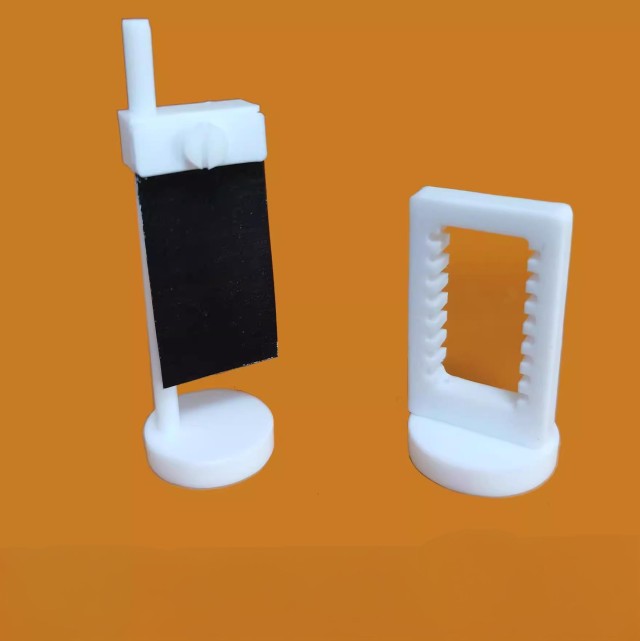
PTFE material
Custom PTFE Teflon Parts Manufacturer for Hydrothermal Synthesis Reactor Polytetrafluoroethylene Carbon Paper and Carbon Cloth Nano-growth
Item Number : PTFE-19
Price varies based on specs and customizations
Shipping:
Contact us to get shipping details Enjoy On-time Dispatch Guarantee.
Why Choose Us
Reliable PartnerEasy ordering process, quality products, and dedicated support for your business success.
Introduction
The PTFE Carbon Paper Reaction Stand Fixture is a versatile tool in various scientific and industrial settings, particularly in laboratories and research facilities. This fixture is designed to securely hold carbon paper. The applications of this fixture are diverse, ranging from chemical experiments to medical research, leveraging the unique properties of PTFE.
- Chemical Research: In laboratories, the fixture is used to conduct experiments involving corrosive chemicals, where PTFE's resistance to strong acids and alkalis is crucial.
- Medical Device Testing: It is employed in the testing and development of medical devices, especially those that require non-stick surfaces to prevent contamination and facilitate easy release.
- Material Science: Researchers use the fixture to study the properties of PTFE and its composites, exploring their potential in various industrial applications.
Details & Parts

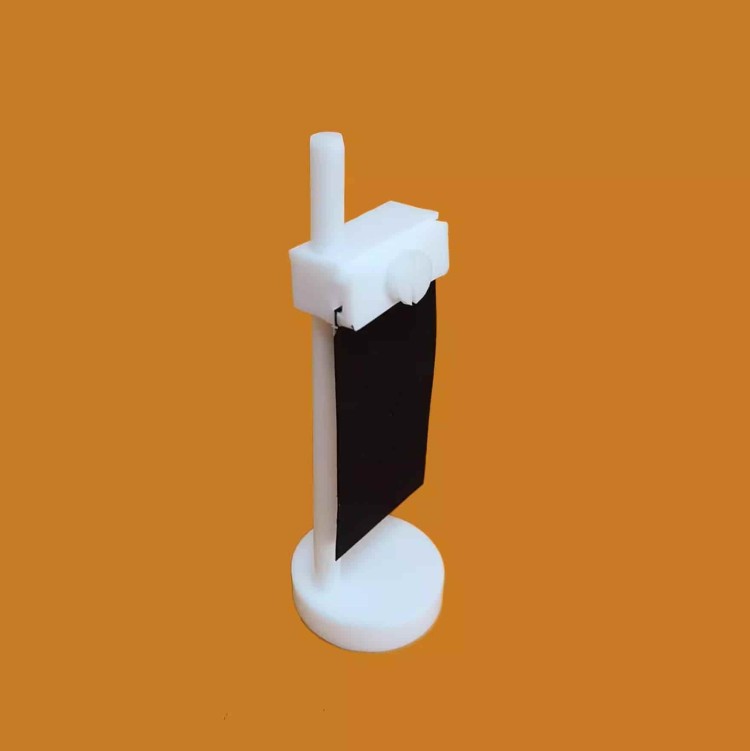

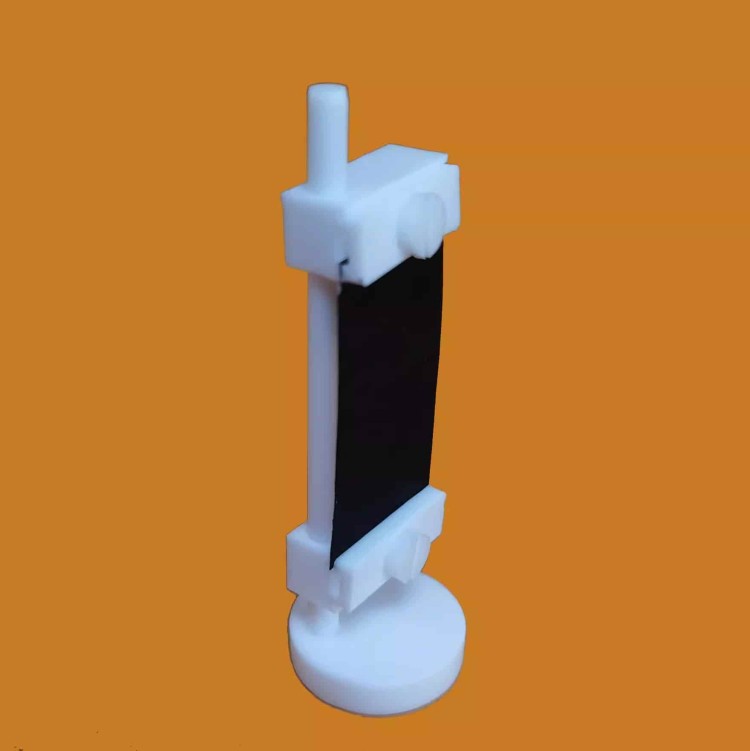
Technical specifications
| Model | diameter |
|---|---|
| Single Clip | 20mm |
| Single Clip | 35mm |
| Double Clip | 20mm |
| Double Clip | 35mm |
Advantages
The PTFE Carbon Paper Reaction Stand Fixture is a versatile and reliable tool in laboratory settings, offering numerous advantages that enhance its functionality and usability. Here are some of the key benefits:
- Chemical Resistance: Made from high-quality PTFE, this fixture is resistant to a wide range of chemicals, including acids and alkalis, making it ideal for use in various chemical reactions without the risk of corrosion or degradation.
- High Temperature Resistance: With the ability to withstand temperatures up to 260º C, the PTFE fixture is suitable for high-temperature experiments, ensuring stability and safety during operations.
- Low Friction Coefficient: The PTFE material used in this fixture has an extremely low friction coefficient, which facilitates smooth operation and reduces the risk of wear and tear, thereby extending the lifespan of the equipment.
- Excellent Lubricity: The inherent lubricity of PTFE ensures that the fixture operates smoothly, reducing the need for additional lubricants and minimizing maintenance requirements.
Designed for You
KinTek provide deep custom made service and equipment to worldwide customers, our specialized teamwork and rich experienced engineers are capable to undertake the custom tailoring hardware and software equipment requirements, and help our customer to build up the exclusive and personalized equipment and solution!
Would you please drop your ideas to us, our engineers are ready for you now!
FAQ
What Are The Primary Applications Of PTFE In Industrial Production And Life?
How Can The Hardness And Wear Resistance Of PTFE Be Improved?
What Is The Impact Of PTFE's Non-stick Properties On Its Industrial Applications?
Why Is Antistatic Material Added To PTFE?
4.9
out of
5
Efficient design and high-temperature stability. Perfect for chemical research and medical device testing.
4.8
out of
5
Outstanding chemical resistance and low friction coefficient. Ideal for materials science and educational demonstrations.
4.7
out of
5
Robust construction and corrosion resistance. Essential for various laboratory procedures and seamless compatibility with standard equipment.
4.9
out of
5
Exceptional non-stick surface and enhanced safety features. A versatile and reliable tool for laboratory settings.
4.8
out of
5
Versatile and reliable with excellent optical clarity. An indispensable tool in various research fields.
4.7
out of
5
High-temperature resistance and durability. Perfect for chemical reactions and high-temperature experiments.
4.9
out of
5
Impressive stability and wear resistance. Suitable for diverse experiments and applications.
4.8
out of
5
Low friction coefficient and compact design. A reliable tool for researchers in different fields.
4.7
out of
5
Superior chemical resistance and non-stick properties. Ideal for preventing contamination in experiments.
4.9
out of
5
Corrosion resistance and enhanced safety measures. An indispensable tool for scientists and researchers.
4.8
out of
5
High-temperature stability and seamless compatibility. Essential for various laboratory procedures.
4.7
out of
5
Reliable and efficient operation with exceptional non-stick surface. Ideal for research in chemistry and biotechnology.
4.9
out of
5
Outstanding chemical resistance and versatility. A reliable tool in numerous laboratory settings.
4.8
out of
5
Exceptional safety features and optical clarity. Perfect for visual monitoring of reactions without interference.
4.7
out of
5
Versatile and reliable with high-temperature resistance. Ideal for various research fields.
4.9
out of
5
Durable and wear-resistant fixture. Suitable for a range of experiments and applications.
4.8
out of
5
Efficient operation and enhanced safety measures. An indispensable tool for laboratory procedures.
4.7
out of
5
Stable and compatible design with excellent non-stick properties. Essential for preventing contamination and ensuring research integrity.
REQUEST A QUOTE
Our professional team will reply to you within one business day. Please feel free to contact us!
Related Products

Custom PTFE Teflon Parts Manufacturer for PTFE Containers
PTFE container is a container with excellent corrosion resistance and chemical inertness.

Custom PTFE Teflon Parts Manufacturer for Centrifuge Tubes
PTFE centrifugal tubes are highly valued for their exceptional chemical resistance, thermal stability, and non-stick properties, making them indispensable in various high-demand sectors. These tubes are particularly useful in environments where exposure to corrosive substances, high temperatures, or stringent cleanliness requirements are prevalent.

Custom PTFE Teflon Parts Manufacturer PTFE Beaker and Lids
The PTFE beaker is a laboratory container that is resistant to acid, alkali, high and low temperatures and is suitable for temperatures ranging from -200ºC to +250ºC. This beaker has excellent chemical stability and is widely used for heat treatment samples and volume analysis.
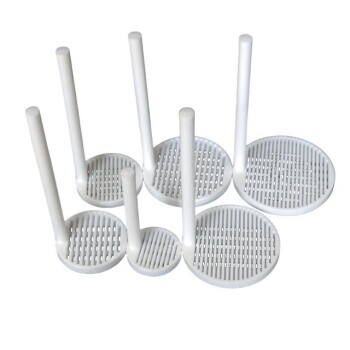
Custom PTFE Teflon Parts Manufacturer for Cleaning Racks
PTFE cleaning racks are mainly made of tetrafluoroethylene. PTFE, known as the "King of Plastics", is a polymer compound made of tetrafluoroethylene.

Custom PTFE Teflon Parts Manufacturer for Air Valve Applications
PTFE small air valve for gas-liquid sampling and sampling bag for sample collection.

Custom PTFE Teflon Parts Manufacturer for Culture Dish and Evaporation Dish
The PTFE culture dish evaporating dish is a versatile laboratory tool known for its chemical resistance and high-temperature stability. PTFE, a fluoropolymer, offers exceptional non-stick properties and durability, making it ideal for various applications in research and industry, including filtration, pyrolysis, and membrane technology.
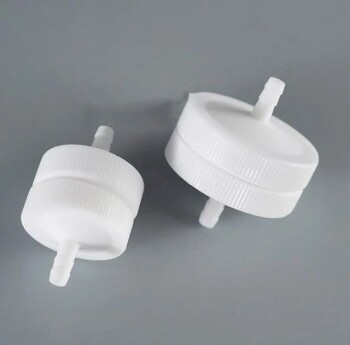
Custom PTFE Teflon Parts Manufacturer for Sampling Filters
PTFE filter element is a commonly used industrial filter element, mainly used to filter corrosive media such as high-purity chemical substances, strong acids, and strong alkalis.
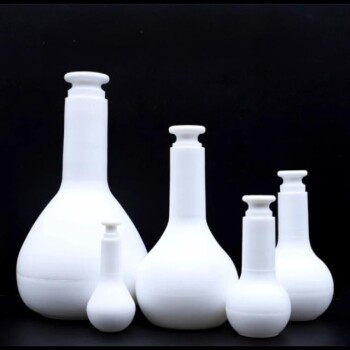
Custom PTFE Teflon Parts Manufacturer for F4 PTFE Volumetric Bottle
The PTFE Volumetric Flask, a robust alternative to glass and PP flasks, excels in measuring both acidic and alkaline liquids. Characterized by its chemical inertness, translucency, and wide volume options, this flask ensures a non-leachable, ultra-clean background. Its non-stick surface simplifies cleaning and maintenance, making it ideal for harsh laboratory conditions.
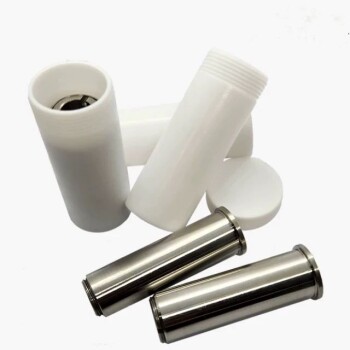
Custom PTFE Teflon Parts Manufacturer for PTFE Bottle Oil Fume Sampling Tube
PTFE products are generally called "non-stick coating", which is a synthetic polymer material that replaces all hydrogen atoms in polyethylene with fluorine.

Conductive Carbon Cloth Carbon Paper Carbon Felt for Electrodes and Batteries
Conductive carbon cloth, paper, and felt for electrochemical experiments. High-quality materials for reliable and accurate results. Order now for customization options.
Related Articles

The key role of PTFE in semiconductor manufacturing: from gas pipelines to electrical insulation
From high-purity gas delivery pipelines to precision electrical insulation components, the multi-faceted application of PTFE in the semiconductor industry chain provides important guarantees for the purity, stability and reliability of the manufacturing process.

Innovative Application of PTFE in Mechanical Seals
PTFE has become one of the core materials in the field of mechanical seals due to its unique chemical stability, low friction coefficient (0.04-0.15), wide temperature range (-268°C to +315°C) and excellent corrosion resistance (pH 0-14).

Polytetrafluoroethylene (PTFE): How low friction coefficient promotes industrial progress
Explore the unique advantages of polytetrafluoroethylene (PTFE)'s low coefficient of friction and analyze how it promotes progress and innovation in industrial technology in terms of reducing wear and improving equipment efficiency.

PTFE's high temperature and corrosion resistance: Why it is indispensable in industry
The unique advantages of polytetrafluoroethylene (PTFE) in high temperature and corrosion resistance analyze why it has become an indispensable material in industry, especially in applications in harsh environments.

Chemical Vapor Deposition (CVD) Process and High Purity PFA Tubing
An overview of the CVD process and the role of high purity PFA tubing in semiconductor manufacturing.

Commonly Used Organic Experimental Reaction Devices
Overview of various devices used in organic experiments to facilitate reactions and improve yields.

PTFE seals: the invisible guardian of industrial leakage prevention
PTFE Seals are used to prevent liquid or gas leakage and are widely used in valves, pumps, and piping systems.

PECVD Nano-Coating Applications Beyond Waterproofing and Corrosion Prevention
Explores diverse PECVD nano-coating applications including waterproofing, anti-corrosion, antibacterial, hydrophilic, and wear-resistant films.

Performance and application of polytetrafluoroethylene (PTFE) in high temperature environment

The Role and Types of Crucibles in Scientific Experiments
Explores the significance and various types of crucibles in scientific experiments, focusing on their materials and applications.

Laboratory Safety: High Pressure Equipment and Reactors
This article discusses safety measures and precautions for using high pressure equipment and reactors in laboratories, including case studies and detailed usage instructions.

Graphite Boats in PECVD for Cell Coating
Exploring the use of graphite boats in PECVD for efficient cell coating.